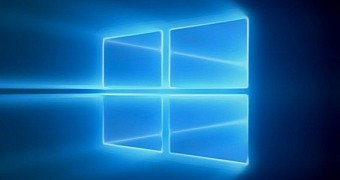Since Windows has migrated from the original concept to Windows as a Service, Microsoft’s desktop operating system is always a work-in-progress, and the feature updates that the company releases every year come to add new capabilities and improve the existing ones.
According to Microsoft’s release calendar, there are two different feature updates that are pushed to Windows 10 every year. The first one typically arrives in the spring, while the other one gets the go-ahead in the fall. As a summary these are the expected release dates for Windows 10 feature update, according to Microsoft’s schedule:
Spring feature update: finalized in March or April, shipped in April or May Fall feature: finalized in September or October, shipped in October or November
Windows 10 uses version numbers that are direct indicators of the dates mentioned above. The version number typically consists of 4 digits, the first two of which represent the year when the update was developed, while the other two indicate the month when it was finalized. As a result:
Windows 10 version 1809 (October 2018 Update): finalized in September 2018 Windows 10 version 1903 (May 2019 Update): finalized in March 2019 Windows 10 version 1909 (November 2019 Update): finalized in September 2019
As you can see, the product name indicates a different date than the version number, only because this one is supposed to point to the date when each feature update was released.
For consumers, knowing the version number doesn’t necessarily help, albeit this could come in handy when requesting assistance for dealing with specific bugs or trying to download updates manually (from other sources than Windows Update).
Right now, Microsoft is believed to already be giving the finishing touches to the first feature update of 2020. And of course, based on the information mentioned above, it’s pretty clear that this doesn’t align with the original schedule, and it’s all because Microsoft is trying a different approach that would help it buy more time for pre-launch testing. Codenamed Windows 10 20H1, this update is projected to be finalized in December and then released in April or May according to the previous calendar.
But at the same time, Microsoft is also embracing a different version numbering with Windows 10 20H1 to be called version 2004. As a summary:
Spring feature update (2020): finalized in December, shipped in April or May Windows 10 version 2004: finalized (RTM) in December
While this approach might not make sense to many, there’s another bit that’s confusing for some users. Why isn’t Microsoft sticking with the original naming system and calling this release version 2003?
It’s all because Windows Server 2003.
Microsoft believes that launching Windows 10 20H1 as Windows 10 version 2003 could create more confusion when talking about Windows Server 2003, so the company just increased the version number by one digit to call it 2004.
On the other hand, this has nothing to do with the month when the update was finalized, as indicated above. A more accurate version number that would include the completion date for Windows 10 20H1 would actually be version 1912 (if the update is indeed finalized in December), but Microsoft wants to stick with a two-updates-per-year approach that makes more sense for Windows 10 going forward.
When looking at all these numbers, all the reasoning behind Windows 10 version numbers is getting pretty confusing, and this is why I said that for consumers, using the product names is just the easier way to go.
Microsoft hasn’t yet announced the official name of the first Windows 10 feature update due in 2020.

 14 DAY TRIAL //
14 DAY TRIAL //